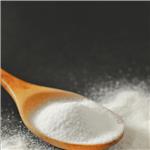- 1-Pentadecanol
-

- $73.00 / 5g
-
2024-11-07
- CAS:629-76-5
- Min. Order:
- Purity: 99.73%
- Supply Ability: 10g
- 1-PENTADECANOL
-

- $5.00 / 1kg
-
2024-08-17
- CAS:629-76-5
- Min. Order: 1kg
- Purity: 0.99
- Supply Ability: 100000
- 1-Pentadecanol
-

- $0.00 / 25KG
-
2024-03-28
- CAS:629-76-5
- Min. Order: 25KG
- Purity: 95%
- Supply Ability: Inquiry
|
| | 1-Pentadecanol Basic information |
| | 1-Pentadecanol Chemical Properties |
| Melting point | 41-44 °C (lit.) | | Boiling point | 269-271 °C | | density | 0.8364 g/cm3 (22.4℃) | | refractive index | 1.4507 (589.3 nm 0℃) | | Fp | >230 °F | | storage temp. | Refrigerator | | solubility | Chloroform, Methanol (Slightly) | | form | Solid | | pka | 15.20±0.10(Predicted) | | color | White to Off-White | | Odor | Very faint, bland-waxy and discretely floral odor of excellent tenacity | | Water Solubility | Insoluble in water. | | BRN | 1700695 | | InChIKey | REIUXOLGHVXAEO-UHFFFAOYSA-N | | LogP | 6.443 (est) | | CAS DataBase Reference | 629-76-5(CAS DataBase Reference) | | EPA Substance Registry System | 1-Pentadecanol (629-76-5) |
| Safety Statements | 24/25 | | WGK Germany | 3 | | TSCA | Yes | | HS Code | 29051900 |
| | 1-Pentadecanol Usage And Synthesis |
| Chemical Properties | white solid | | Uses | 1-Pentadecanol is a fatty alcohol found in myrrh and frankincense essential oils. | | Uses |
1-Pentadecanol may be employed as starting reagent for the asymmetric synthesis of jaspine B[1].
| | Preparation | via Myristic acid and the Cyanide
(Pentadecanoic nitrile) to the Pentadecanoic
acid via Ethylester and reduction to the title
alcohol. | | Definition | ChEBI: A long-chain fatty alcohol that is pentadecane in which one of the terminal methyl hydrogens is replaced by a hydroxy group | | General Description | Colorless liquid with a faint odor of alcohol. Floats on water. | | Reactivity Profile | 1-PENTADECANOL is an alcohol. Flammable and/or toxic gases are generated by the combination of alcohols with alkali metals, nitrides, and strong reducing agents. They react with oxoacids and carboxylic acids to form esters plus water. Oxidizing agents convert them to aldehydes or ketones. Alcohols exhibit both weak acid and weak base behavior. They may initiate the polymerization of isocyanates and epoxides. | | Health Hazard | Low toxicity. Excessive exposure produces some central nervous system depression. Prolonged contact produces skin irritation. | | References | [1] K. Venkatesan, K.V. Srinivasan. “A novel stereoselective synthesis of pachastrissamine (jaspine B) starting from 1-pentadecanol.” Tetrahedron, asymmetry 19 2 (2008): Pages 209-215. |
| | 1-Pentadecanol Preparation Products And Raw materials |
|